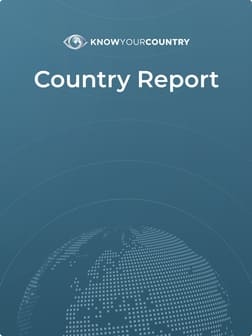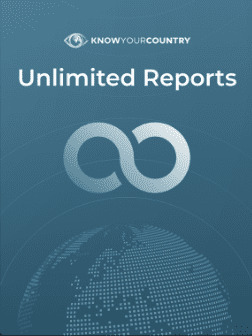
Slovenia Country Summary
Sanctions
Limited US sanctions
FATF AML Deficient List
No
Terrorism
Corruption
US State ML Assessment
Criminal Markets (GI Index)
EU Tax Blacklist
Offshore Finance Center
Background Information
Anti Money Laundering
FATF Status
Slovenia is not on the FATF List of Countries that have been identified as having strategic AML deficiencies
Compliance with FATF Recommendations
The last follow up to the Mutual Evaluation Report relating to the implementation of anti-money laundering and counter-terrorist financing standards in Slovenia was undertaken in 2023. According to that Evaluation, Slovenia was deemed Compliant for 11 and Largely Compliant for 28 of the FATF 40 Recommendations. It remains rated Highly Effective for 0 and Substantially Effective for 1 with regard to the 11 areas of Effectiveness of its AML/CFT Regime.
US Department of State Money Laundering assessment (INCSR)
Slovenia was deemed a ‘Monitored’ Jurisdiction by the US Department of State 2016 International Narcotics Control Strategy Report (INCSR). Key Findings from the report are as follows: -
Slovenia is not a major drug producer, but it is a transit country for drugs moving via the Balkan route to Western Europe. The Government of Slovenia is aware that Slovenia’s geographic position makes it an attractive potential transit country for drug smugglers, and it continues to pursue active counter-narcotics policies. Other predicate offenses of concern include business and tax fraud. In 2015, there were continuing efforts to continue with the privatization process.
Sanctions
OFAC
Following the issue of EO 14033 in June 2021, the US has expanded the scope of sanctionable conduct in the Western Balkans to include the Republic of Albania and the territory of the former Socialist Federal Republic of Yugoslavia, which today comprises the modern states of Bosnia and Herzegovina, Croatia, Kosovo, Montenegro, North Macedonia, Serbia, and Slovenia.
Bribery & Corruption
Rating (100-Good / 0-Bad)
Transparency International Corruption Index 56
World Governance Indicator – Control of Corruption 78
Corruption is a risk for businesses operating in Slovenia. The overlap between business and politics has a particularly damaging effect on public procurement. Many public officials engage in corruption with impunity, and corruption scandals recently culminated in political instability and the eventual fall of the government. Slovenia's Criminal Code establishes a strong legal framework to mitigate corruption, criminalising extortion, passive and active briberyand money laundering, among other offences. However, enforcement is limited. Even though facilitation payments, gifts and hospitality (with the intent of gaining an advantage) are criminalised, businesses perceive bribery as an established way of doing business in Slovenia. For further information - GAN Integrity Business Anti-Corruption Portal
Economy
Several factors make Slovenia an attractive location for foreign direct investment (FDI): modern infrastructure with access to important EU transportation corridors, a major port on the Adriatic Sea with access to the Mediterranean, a highly educated and professional workforce, proximity to Central European and Balkan markets, and membership in the Schengen Area, EU, and Eurozone. With a small domestic market of just over two million people, Slovenia’s economy is heavily dependent on foreign trade and susceptible to international price and currency fluctuations as well as economic conditions among its major trading partners.
In recent years, Slovenia’s economic growth rate has outpaced those of most other EU member states, and the country has enjoyed rising incomes, growing domestic consumption, falling unemployment, low inflation, and burgeoning consumer confidence. Slovenia’s economy rebounded after the COVID-19 pandemic with a GDP growth rate of 8.1 percent in 2021, exceeding the eurozone average. However, due to rising inflation and energy prices – both exacerbated by the Russian invasion of Ukraine – Slovenia witnessed slower growth of 5.4 percent in 2022 and is expecting more modest growth of 1.8 – 2.6 percent until 2025.
Despite a number of privatizations in the banking sector in 2019 and 2020, approximately 25 percent of Slovenia’s economy remains state-owned or state-controlled based on consultations with economic and financial experts. While estimates of the percentage of state involvement in the economy vary, most experts agree that it is among the highest among EU member states. There is widespread skepticism in some quarters toward privatization and foreign direct investment, despite general awareness of FDI’s importance to economic growth, job creation, and developing new technologies. Potential investors in Slovenia may face significant challenges, including a lack of transparency in economic and commercial decision-making, time-consuming bureaucratic procedures, opaque public tender processes, regulatory red tape, and a heavy tax burden for high earners.
According to Bank of Slovenia figures, FDI in Slovenia totaled EUR 18.4 billion (35.2 percentof GDP) in 2021, a 10.4 percent increase over the previous year. This relatively large growth in investment flows is largely attributed to the easing of pent-up investment activity during the COVID-19 pandemic. The most important sources for direct foreign investment were Austria (24.9 percent), Luxembourg (11.9 percent), Switzerland (11.2 percent), Croatia (9.7 percent) and Germany (8.1 percent). However, Bank of Slovenia data indicated U.S. companies accounted for 8.9 percent of total inward foreign direct investment (FDI) in 2021, EUR 96.1 million (USD 105.5 million) invested directly and an additional EUR 1.53 billion (USD 1.68 billion) invested indirectly through U.S. subsidiaries in other European countries. This combined investment of EUR 1.63 billion (USD 1.79 billion) placed the United States as Slovenia’s third largest source of direct and indirect foreign investment, behind Austria (EUR 2.82 billion) and Germany (EUR 2.65 billion). The most important sectors for FDI were manufacturing (31.8 percent), financial and insurance activities (21.3 percent), wholesale and retail trade and repair of motor vehicles and motorcycles (19.4 percent).
Slovenia, in line with the European Union (EU), committed to reducing greenhouse gas emissions by at least 55 percent by 2030 (compared to 1990 levels) and achieving climate neutrality by 2050. Slovenia’s long-term climate strategy, approved in July 2021, includes a provision specifying that the country will use nuclear energy in the long term, clarifying the country’s energy future and committing to produce a large percentage of its energy supply domestically. In July 2021, the EU approved Slovenia’s national recovery and resilience plan, allowing funds up to EUR 2.5 billion (EUR 1.8 billion in grants and 700 million in loans) to be drawn from the EU Recovery and Resilience Facility. 42.5 percent of the funds are earmarked for green transition projects.
Country Links

Buy Full Slovenia Report
$25 one time payment
- Risk Analysis
- Corruption
- Economy
- Sanctions
- Narcotics
- Executive Summaries
- Investment Climates
- FATF Status
- Compliance
- Key Findings

Unlimited Reports
$40 Monthly
